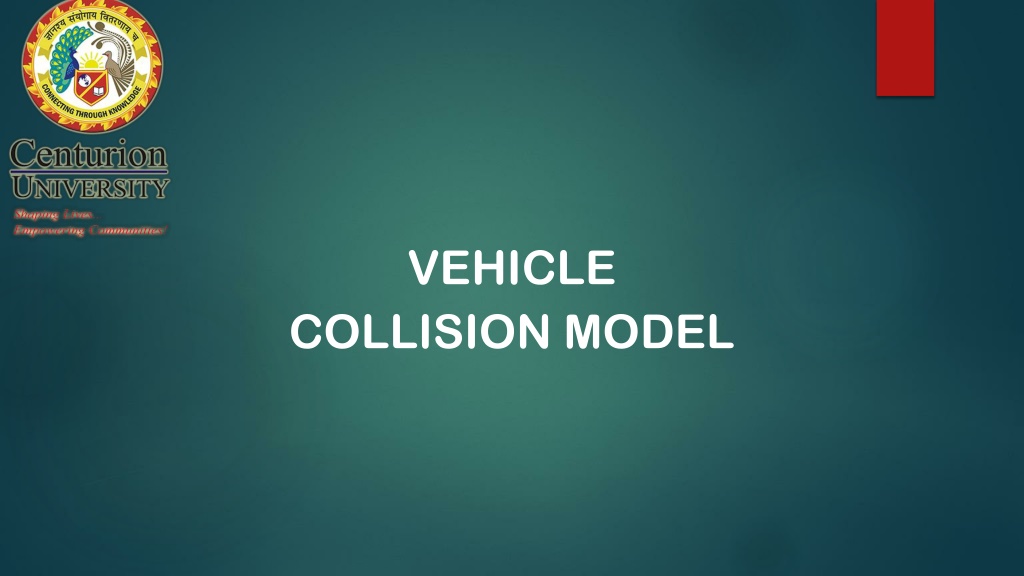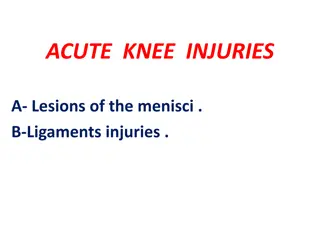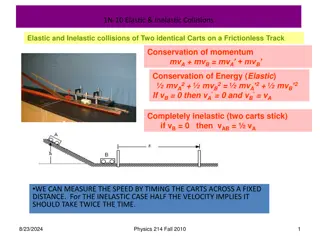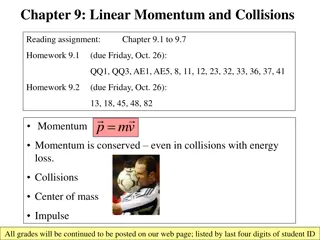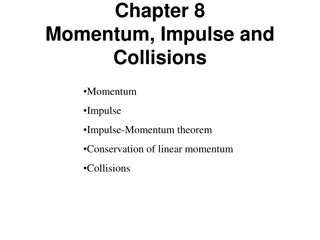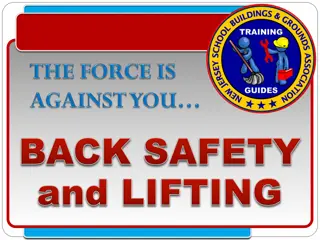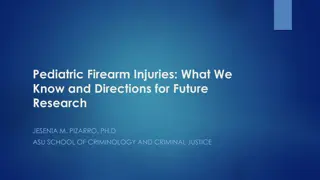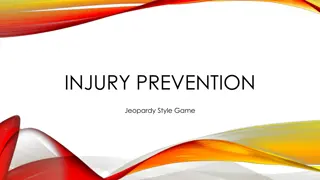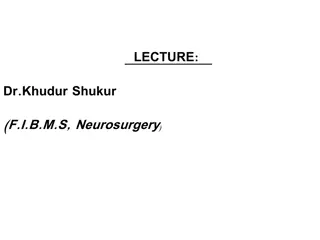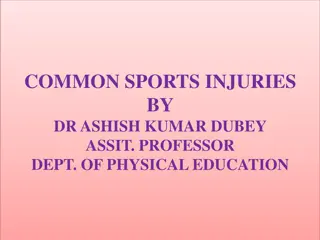Understanding Vehicle Collisions: Causes, Types, and Injuries
Vehicle collisions involve various types such as front impacts, side impacts, and rear-end collisions, resulting in different injuries like back and head injuries, neck injuries, soft tissue damage, broken bones, and internal injuries. Understanding the causes and effects of collisions can help prevent accidents and minimize injuries.
Download Presentation

Please find below an Image/Link to download the presentation.
The content on the website is provided AS IS for your information and personal use only. It may not be sold, licensed, or shared on other websites without obtaining consent from the author. Download presentation by click this link. If you encounter any issues during the download, it is possible that the publisher has removed the file from their server.
E N D
Presentation Transcript
VEHICLE COLLISION MODEL
CONTENT COLLISION PARTS OF COLLISION TYPES OF COLLISION CAUSES OF COLLISION COLLISION DIAGRAM REFERENCE
COLLISION COLLISION collision is any event in which two or more bodies exert forces on each other in a relatively short time.
PARTS OF COLLISION 1. VEHICLE COLLISION 1. VEHICLE COLLISION The first collision is when a vehicle strikes another object object, generally linked to a car crash. When the vehicle impacts, it rapidly decelerates as it crashes due to the force of the collision. While most modern vehicles are equipped to absorb much of the kinetic energy associated with a crash, humans are not totally protected from harm and injury during a vehicle collision. Back and head injuries Neck injuries a vehicle strikes another Back and head injuries Neck injuries
2. HUMAN COLLISION 2. HUMAN COLLISION The second collision is the human collision when the human body that was traveling at the same speed as the vehicle hits an object that causes the forward motion of the human to stop. This might be a seatbelt that catches you and absorbs much of the motion, which can still lead to soft tissue damage, broken bones, and internal injury.
3. INTERNAL COLLISION 3. INTERNAL COLLISION There is more going on than cars hitting cars and humans hitting the interior of cars in an accident, as there is also motion happening inside your body. Your internal organs and brain will move with the same momentum and come to a sudden stop, which can cause internal injuries like ruptured organs, brain injury, internal hemorrhaging, or broken ribs.
TYPES OF COLLISION TYPES OF COLLISION FRONT TYPE COLLISION Front-impact collisions when the front end of a vehicle hits another vehicle or something on the side of the road, like a tree or telephone pole
SIDE IMPACT COLLISION Side-impact collisions can be either a classic T-bone or a sideswipe. The former often occurs at intersections, usually as the result of some sort of confusion regarding which vehicle has the right of way.
REAR END COLLISION Motorists are prone to rear-end collisions in heavy commuter traffic on highways and thoroughfares. The most common causes are driving too fast or too aggressively, or failing to leave sufficient space between you and the vehicle in front of you.
PARKING LOT COLLISION Dented bumpers are all too common in busy parking lots. They may happen when a car is backing out of a parking spot or where there are multiple cars moving in different directions.
COLLISION ANGLE BETWEEN TWO COLLISION ANGLE BETWEEN TWO VEHICLES VEHICLES angle measured between the two vertical longitudinal zero planes of the vehicles involved
CAUSES OF COLLISION CAUSES OF COLLISION Driver Pedestrian Passengers Vehicle Road conditions Weather conditions
COLLISION DIAGRAM COLLISION DIAGRAM Collision diagrams are used to display and identify similar accident patterns. They provide information on the type and number of accidents; including conditions such as time of day, day of week, climatic conditions, pavement conditions, and other information critical to determining the causes of safety problems.
REFERENCE REFERENCE https://living.geico.com/driving/auto/car-safety-insurance/common- collisions/ https://testbook.com/question-answer/in-a-collision-diagram-the- symbolsnb-- 61bae651f4b29aaaf69a607b#:~:text=Collision%20diagrams%20are, of%20safety%20problems
